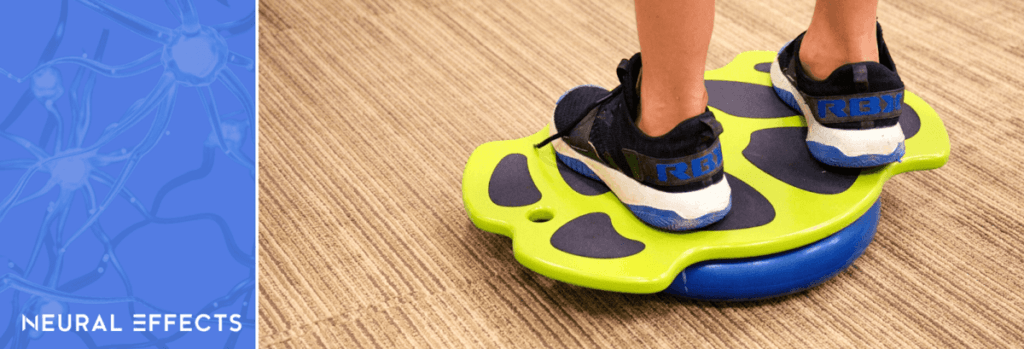Recovering from a concussion often means dealing with near-constant physical symptoms, such as headaches, balance issues, and blurred vision — not to mention cognitive issues, such as brain fog and difficulty paying attention. These symptoms can affect every aspect of your life, making even seemingly simple tasks problematic. Plus, they can be made worse by tasks like cardio exercise or cleaning the house.
If you’re in this position, and you want relief from some of your symptoms, then physical therapy is a good option. With the help of a physical therapist, you may be able to regain physical abilities lost as a result of the brain injury and speed up your overall recovery as well. Physical therapy can improve your coordination and balance, address your vision issues, relax neck and head muscles, and help you overcome exercise intolerance.
That said, as much as physical therapy can alleviate and treat some symptoms, it’s not the only approach when it comes to treating brain injuries. Patients can also benefit greatly from cognitive therapy to address symptoms that cannot be addressed by physical therapy alone. Cognitive therapy and physical therapy together can help with common symptoms such as brain fog, difficulty concentrating, and memory issues.
In this article, we look at how physical therapy can help with concussion care and suggest some practical ideas to help with your recovery at home, including:
- Why physical therapy can help with a concussion.
- Which symptoms physical therapy can treat.
- Why physical therapy is part of a good treatment protocol but isn’t the whole picture.
- Activities you can do at home.
If you live in Provo, Salt Lake City, or anywhere else in the Utah valley area, we can help you recover from your concussion and reduce your chance of long-term symptoms. We are in network for most types of medical insurance. Schedule your evaluation today.
How Can Physical Therapy Help with a Concussion?
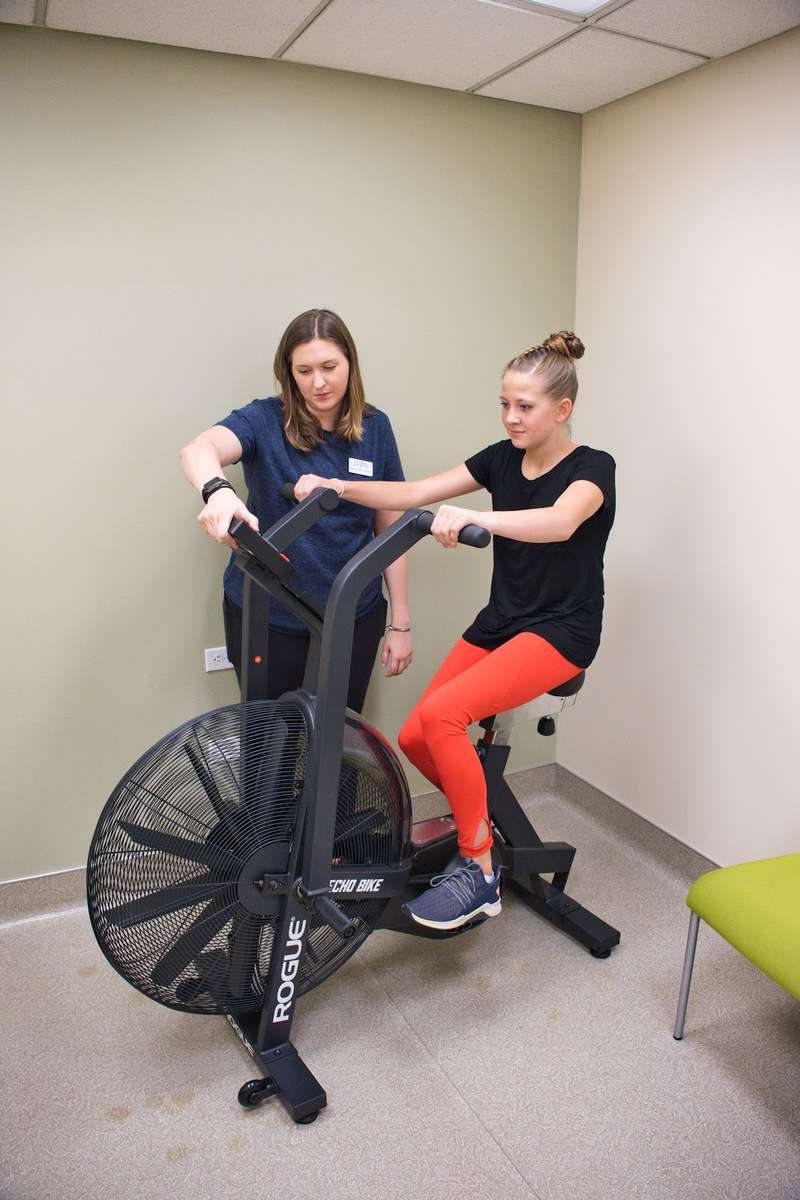
For years, complete rest until symptoms subsided was the standard treatment for concussions. However, studies show that a more active approach — with a strong emphasis on physical therapy — is a more effective way to treat this condition.
The American Physical Therapy Association (APTA) recognizes that “physical therapists are part of the multidisciplinary team of licensed health care providers who deliver concussion management and rehabilitation.” According to their statement, their role includes examination to establish a diagnosis, identification of specific impairments, implementation of a plan of care, monitoring of progress and recovery, and making return-to-participation decisions.
In other words, supervised physical activity can be used to rehabilitate patients recovering from mild traumatic brain injuries. Rest is still an important part of this process, but — under the supervision of a physical therapist — physical exercise has become a vital part of treatment.
This is because physical therapy and aerobic training have multiple benefits for concussed patients. One of the most important is a marked improvement in blood flow and oxygenation, which in turn promotes metabolism in the brain and engages neurovascular coupling, the relationship between your neurons and the blood vessels that supply them with oxygen and other nutrients.
In addition, exercise can also help regulate the autonomic nervous system (ANS). Briefly, communication between two parts of the ANS — the sympathetic and parasympathetic nervous system — is often disrupted after a concussion, but aerobic exercise can bring them together again. This is visible when, after a few sessions of aerobic training, patients can start exercising without symptom exacerbation and without a significant increase in heart rate (you can read more about exercise intolerance later in the article).
These specialists also teach patients how to stay physically active within the restrictions of their condition and help develop a plan for safely returning to normal daily activities while avoiding re-injury.
Ultimately, physical therapists can offer a wide range of treatments for patients recovering from a brain injury, including very specific exercises that help with specific symptoms.
Note: Physical therapy can also help with post-concussion syndrome, the condition that arises when concussion symptoms do not go away after three months. You can learn more about how post-concussion syndrome is treated here.
Physical Therapy Can Treat a Wide Range of Symptoms

Some of the concussion symptoms that can be alleviated with physical therapy include neck and shoulder pain, vision problems, balance issues, and exercise intolerance.
Neck and Shoulder Pain
About two-thirds of concussed patients experience neck pain immediately after the injury, and almost half still have some degree of persistent neck and shoulder pain more than a month afterwards. This is common after a car accident, often associated with whiplash, but it can happen with any concussion. Worryingly, experiencing neck or shoulder pain during the first few days after the injury is often associated with a worse clinical outcome if left untreated.
In the split second before impact, your neck and shoulder muscles tighten up to provide protection. This often leads to chronic tension that puts pressure on the spine and head, particularly if the muscles remain in a tense state. The autonomic nervous system (ANS) may influence tension in the muscles around the neck and shoulder area (and sometimes the jaw).
You might experience symptoms such as:
- Neck and shoulder pain.
- Loss of range of motion in the neck.
- Headaches at the base of the skull.
- Numbness or tingling in the arms.
Treatment of Neck and Shoulder Pain with Physical Therapy
At Neural Effects, we use neuromuscular therapy to help patients find relief from some of these symptoms. This manual therapy approach consists primarily of massages, stretches, and manipulation of soft tissue around the neck area.
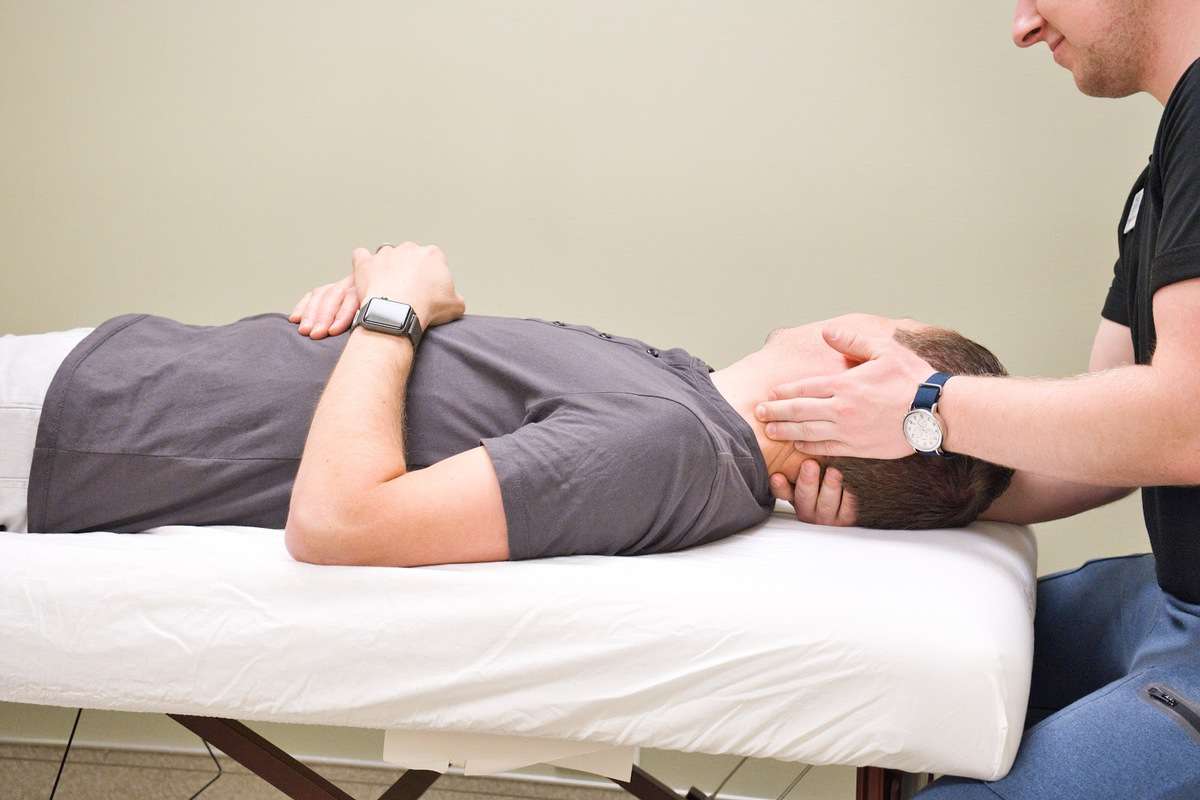
This approach helps muscles relax, increases blood flow in the head and neck, and reduces local inflammation. When neck muscles are relaxed, they can support the head better, allowing patients to carry on with other activities and therapies without the additional stress of tight muscles. The aim is for these muscles to return to normal function instead of causing pain.
Blurry Vision and Other Vision Problems
Vision-related symptoms are identified in up to 69% of concussion patients.
This high frequency should not come as a surprise, given that more than half of the brain’s pathways are dedicated to controlling vision and eye movement. Impact on the frontal and temporal lobes, for example, is particularly prone to causing vision issues after a concussion.
Common oculomotor symptoms include:
- Blurred vision, which often gets worse when a patient is tired.
- Double vision.
- Light sensitivity.
- Difficulty tracking objects.
- Loss of visual field.
- Problems with depth perception.
Treatment of Vision Issues with Therapy
Vision therapy involves a series of specific exercises and visual activities designed to correct the problems caused by a head injury. Unlike glasses or contact lenses, which just compensate for vision problems, vision therapy aims to teach the visual system to correct itself.
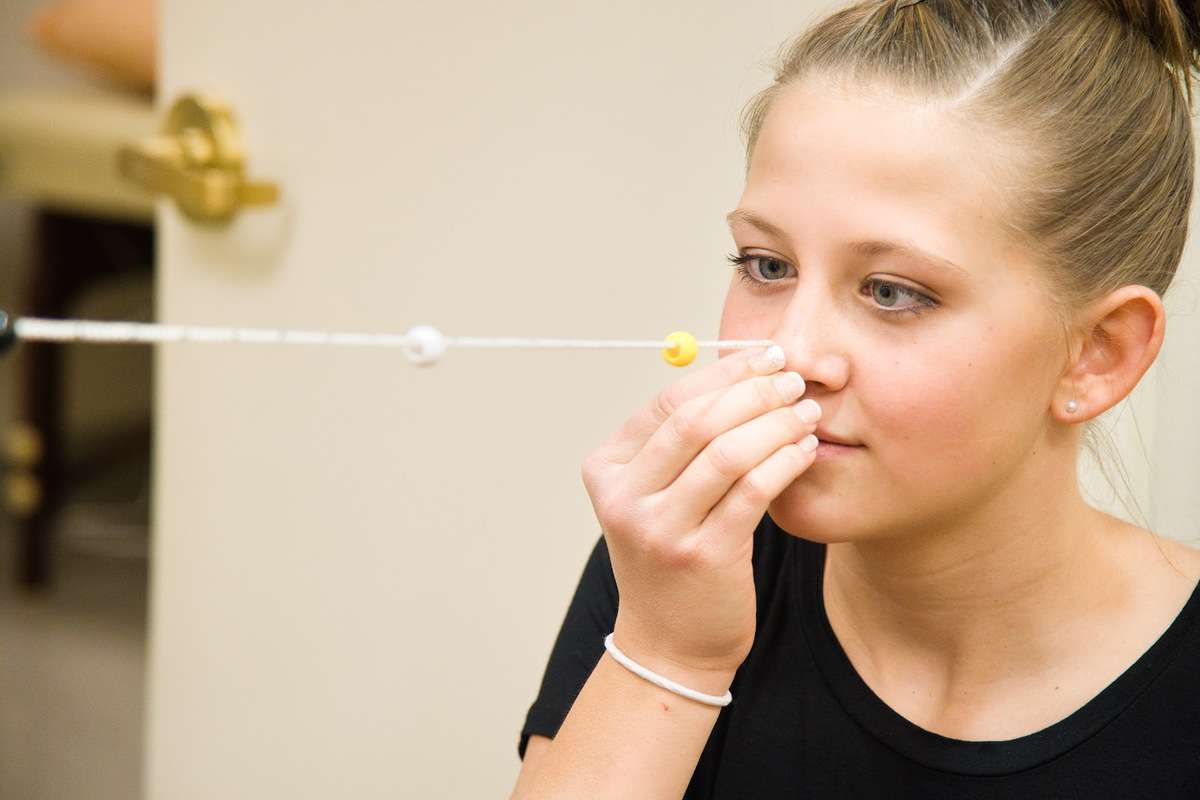
Examples of different exercises include covering one eye with one hand and focusing on multiple objects or following a pattern to build up vision muscles. Another vision therapy that we use at Neural Effects is called the Brock String: This is simply a string with a few beads on it to help the patient focus on objects at various distances and gain greater control over eye teaming.
Poor Balance and Dizziness
For patients who’ve suffered head trauma, one of the most common symptoms of a concussion is the inability to maintain balance. In fact, between 40% to 60% of patients experience dizziness, have vertigo, or feel unsteady or lightheaded after a concussion.
Patients are likely to experience these symptoms when they change positions, such as standing up or lying down. These symptoms can severely restrict daily activities and active participation in social life. More severe symptoms are often associated with a longer recovery, increased risk of falling, and gait abnormalities.
Many areas in the brain control balance, but one of the most important is the vestibular system. Located in the inner ear, the vestibular system provides the brain with information like the position of the head and how the body is moving. This is crucial to maintaining balance.
If a concussion causes dysfunction in the vestibular organ or the vestibular nerve, the most likely result is balance issues, such as:
- Difficulty with balance and postural control.
- Disorientation.
- Dizziness or vertigo (it may feel like the room is spinning or a slow, wavy sensation as if you’re on a boat).
- Trouble stabilizing vision when moving your head.
- Trouble focusing on moving objects (which may affect driving skills).
Treatment of Balance Issues with Physical Therapy
Vestibular rehabilitation is a form of physical therapy designed to reduce dizziness, headaches, and other problems related to balance.
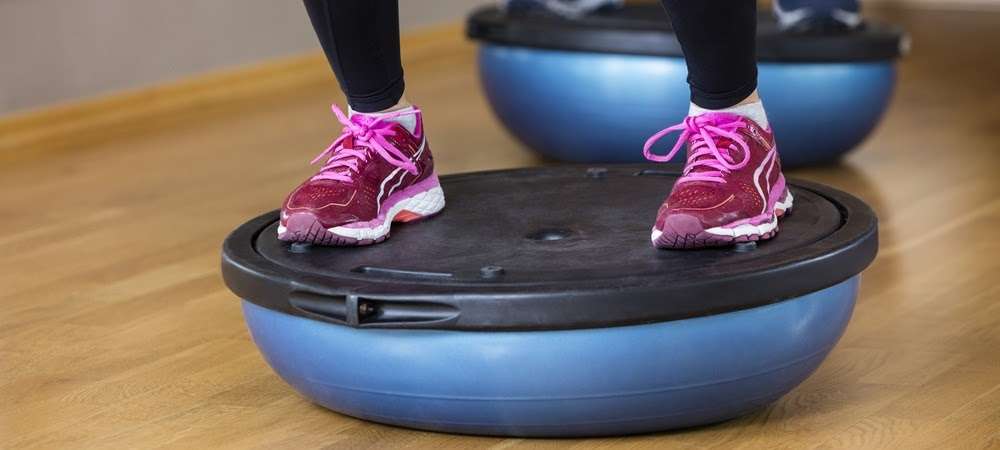
For example, one of the balance exercises we do at Neural Effects involves patients practicing balance while standing on a Bosu ball (an inflated rubber hemisphere attached to a rigid platform). With the dome side facing up, this device provides an unstable surface to practice balance while the device itself remains stable. Patients may have to catch and toss balls and name something that starts with a particular letter of the alphabet or list animals in alphabetical order, all at the same time. This is a good exercise to engage both body and brain simultaneously.
Exercise Intolerance
Several studies indicate that reduced tolerance of physical activity is common after a concussion, with many patients reporting exacerbated symptoms, such as headaches, nausea, dizziness, brain fog, changes in blood pressure, and extreme fatigue. For some, this happens during or immediately after exercise, while for others, it may take a few hours for these symptoms to show up. Most patients, however, end up stopping exercise altogether because they can’t cope with the symptoms it causes.
Nevertheless, studies show that physical therapy in the form of aerobic exercise, with small amounts done in a controlled environment, shortens concussion recovery time and helps overcome exercise intolerance.
Mild aerobic activity improves blood flow to the brain and stimulates the release of important neurochemicals. One of these chemicals is called brain-derived neurotrophic factor (BDNF), which promotes neuronal growth and repair itself and improves communication between different cells in the brain. Every time you exercise, your body releases BDNF, resulting in a post-exercise cognitive boost. BDNF is vital to repair the brain and to help it perform more difficult cognitive exercises.
You can read more here about how cardio exercise helps patients recover.
Treatment of Exercise Intolerance with Physical Therapy
At Neural Effects, we frequently treat patients who suffer from exercise intolerance after a concussion. After establishing the sub-symptom threshold — below which exercise doesn’t trigger symptoms — we guide each patient through aerobic exercise sessions, either on a treadmill or on a stationary bike.

Our therapists know how to adapt these sessions based on how the patient’s brain and body react to treatment. We stop exercise at the first signs of symptom exacerbation or if patients have a dangerously high heart rate. If patients respond well, we can increase the intensity and/or duration of exercise.
Physical Therapy is Part of Treatment, but There’s More
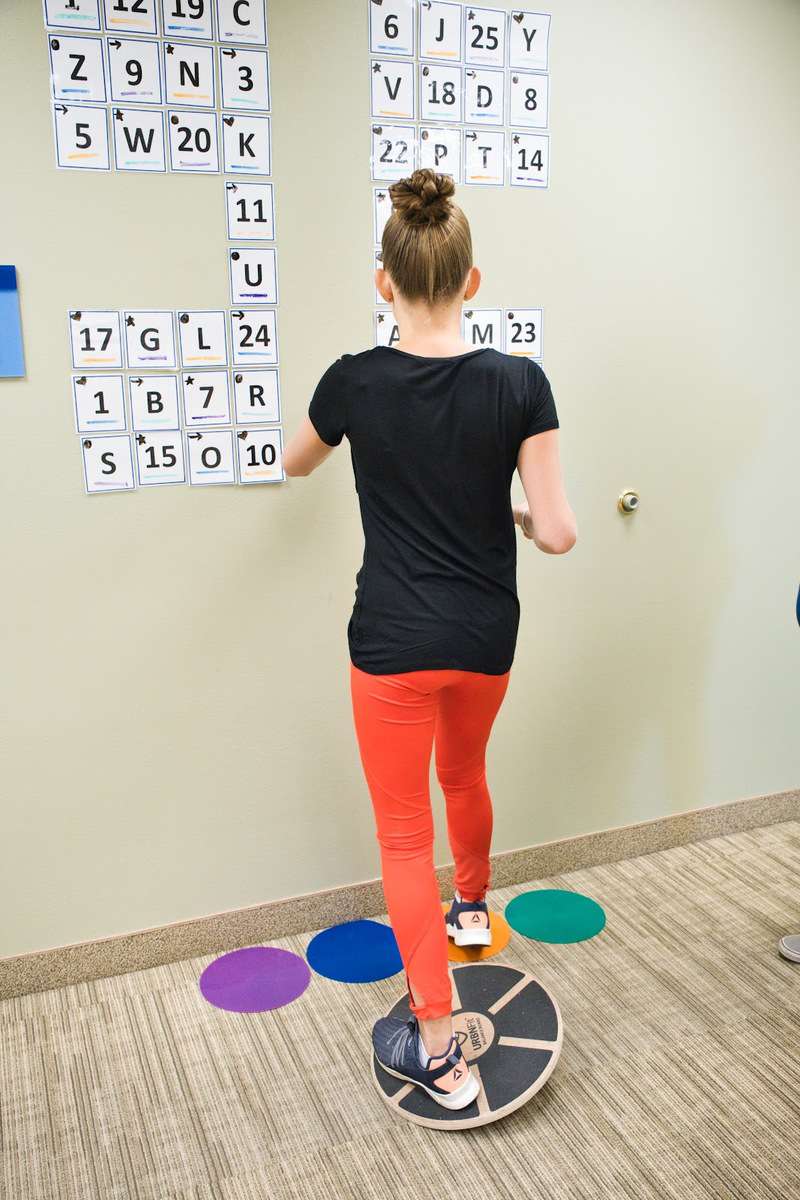
Physical therapy sessions play a key role in helping patients return to their pre-concussion level of functioning, as well as in improving their overall health and well-being.
But concussions cause symptoms that cannot always be treated with physical therapy, including difficulty thinking, brain fog, and problems sleeping, to name just a few.
Physical therapy can alleviate some symptoms and improve recovery rates, but it’s not a comprehensive treatment. In fact, it’s only one part of the rehabilitation approach we take at Neural Effects.
Concussion Treatment at Neural Effects
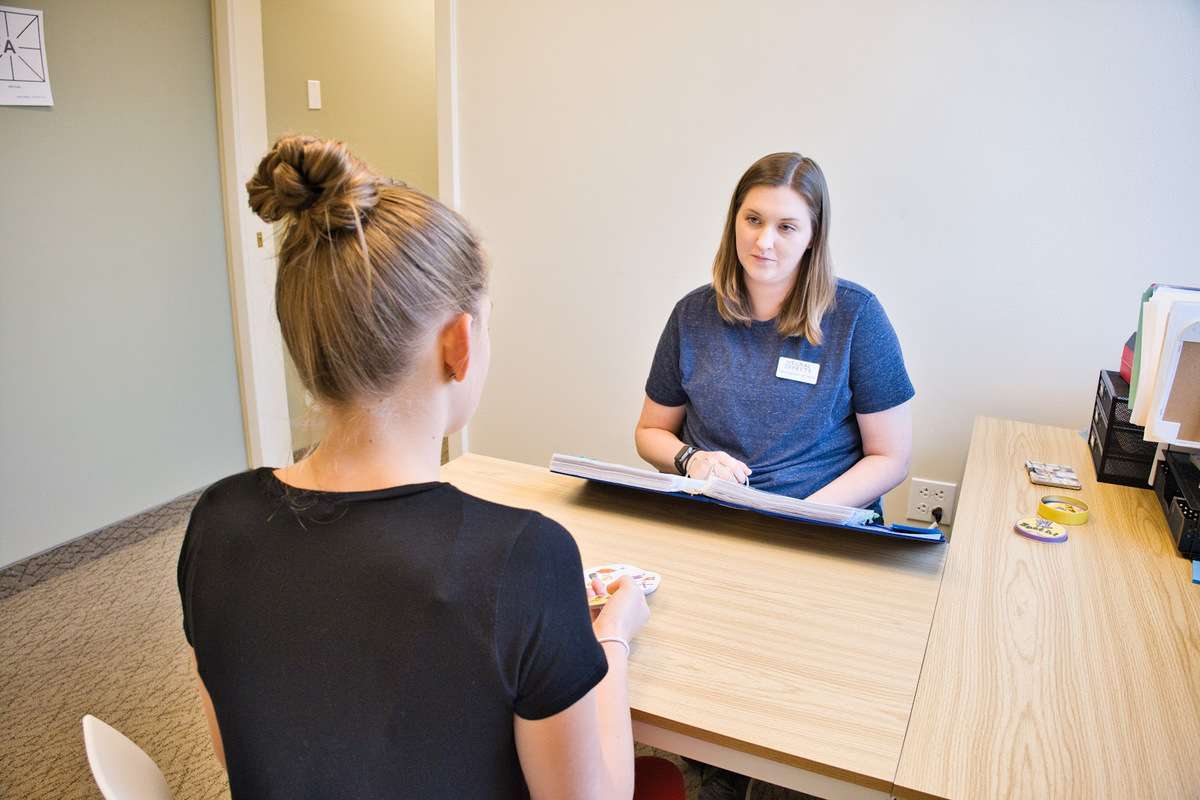
When patients arrive at Neural Effects, they undergo a thorough evaluation of symptoms and medical history, in addition to examination of the cranial nerve, cervical spine, vision, and balance. Based on the results of these tests, our team designs a treatment plan to suit the patient’s needs.
Ideally, patients should start treatment as soon as they’ve finished a 48-hour waiting period after the concussion. Each patient receives three one-hour sessions over two weeks, but this can be adjusted according to their specific needs. As described earlier, these sessions include a combination of physical therapy and cognitive therapy.
Physical therapy sessions include cardio exercise, usually on a stationary bike or treadmill, and breathing exercises. Our therapists guide you through these exercises to raise your heart rate to improve blood flow in the brain, but not enough to trigger symptoms. Patients also undergo ocular, vestibular and neuromuscular therapies, targeting both body and brain at the same time.
In addition, patients complete cognitive tasks, such as solving logic puzzles, finding hidden patterns, and memorizing images. These exercises help with symptoms like brain fog, memory problems, difficulty paying attention, and more, by coaxing the brain into using the regions responsible for those processes.
What Can I Do at Home?

The end of the treatment at our clinic does not have to mean the end of physical therapy. Here are some things you can do at home to help with your concussion rehabilitation:
- Exercise: As discussed above, exercise is a vital part of your recovery. Gradually increase your activity levels, but be careful not to trigger your symptoms.
- Focus on breathing: Take some time every day to focus on breathing exercises. Breathe in for four seconds, breathe out for six seconds, and pause for one second before continuing the pattern.
- Relax: Every day, spend at least fifteen minutes relaxing. Use this time to do your breathing exercises, meditate, listen to calming music, or just sit outside.
- Eat healthy: Eat a balanced diet with plenty of brain-friendly foods.
- Do your Neural Effects homework: Do the exercises our therapists gave you at the end of your treatment, including cardio, cognitive games, and breathing techniques. This will significantly increase your chances of a complete recovery.
- Download an app for physical therapy exercises: Use an app to suggest different exercises you can do at home. Make sure you ask your doctor before you start.
- Don’t give up: Even if your recovery takes a little longer than expected, don’t lose hope that you will make a full recovery.
If you live in Provo, Salt Lake City, or anywhere else in the Utah valley area, we can help you recover from your concussion and reduce your chance of long-term symptoms. We are in network for most types of medical insurance. Schedule your evaluation today.
